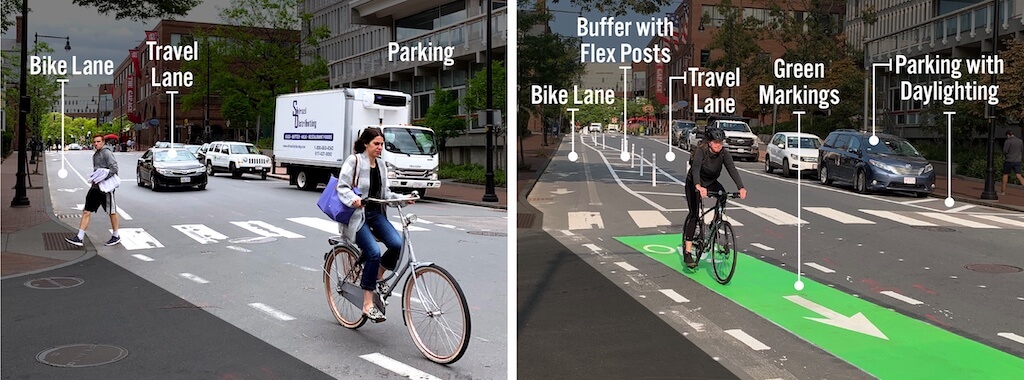Autumn Gear Guide
Find inspiration in our Gear Guide that will keep you out on your bike through wind or rain.
Download NowA recent study shows that a separated bike lane installed in Cambridge, Massachusetts has been a resounding success. The study conducted by a volunteer-led team BCU Labs on behalf of the Boston Cyclists Union (BCU) delves into the significant impact of bike lane improvements on local ridership and community mobility. The study, part of an ongoing […]
A recent study shows that a separated bike lane installed in Cambridge, Massachusetts has been a resounding success.
The study conducted by a volunteer-led team BCU Labs on behalf of the Boston Cyclists Union (BCU) delves into the significant impact of bike lane improvements on local ridership and community mobility. The study, part of an ongoing series focusing on bike data analysis, aims to advocate for enhanced cycling infrastructure and promote mobility justice in Boston.
The study highlights the transformative effect of even small-scale bike lane enhancements on neighborhood biking habits. Drawing on examples from cities where bike ridership has more than doubled following the installation of improved bike lanes, the research underscores the potential for strategic infrastructure projects to catalyze substantial increases in cycling activity.
One such project examined in the study is the recent overhaul of a half-mile section of Garden Street in Cambridge. Under the Cycling Safety Ordinance, which mandates the construction of 25 miles of separated bike lanes by 2026, Cambridge revamped Garden Street by replacing door-zone bike lanes and sharrows with fully separated bike lanes in both directions. Despite initial concerns about parking loss, the city opted to retain most parking spaces while converting the street to one-way traffic for cars.
“Separated bicycle lanes increase comfort for people biking by using a buffer zone and physical barrier to separate them from vehicles,” said Brooke McKenna, Cambridge’s assistant director for street management, leading up to the installation. “This separation increases safety, and building a network of these separated lanes will encourage more people to bike by more-comfortably connecting important destinations throughout Cambridge.”
The study monitored biking activity before and after the Garden Street project, revealing a remarkable surge in ridership. Within just four months of the project’s completion, bike mode share on residential streets within a half-mile radius increased by 300%, with bike volumes soaring by over 500%. This surge in biking activity extended beyond Garden Street, encompassing surrounding streets as well.
Analyses comparing Bluebikes ridership data indicate a significant spike in ridership in the vicinity of Garden Street, further emphasizing the project’s impact on local cycling habits. The findings suggest a pent-up demand for cycling among residents, underscoring the pivotal role of safe infrastructure in encouraging active transportation.

The Garden Street project was not without controversy and even resulted in a failed lawsuit by the now-ubiquitous “streets for all” type group, which seems to actually mean streets for cars. This one, of course, dubbed Cambridge Streets for All.
The study also examines traffic count data before and after the installation of bike lanes, revealing a substantial increase in bike ridership despite seasonal fluctuations. Adjusted for seasonal variations, the project’s impact on bike ridership nearly quadruples, highlighting the enduring effect of safe infrastructure on cycling behavior.
In addition to promoting cycling, the study indicates a reduction in driving, as reflected in the increased bike/car mode-share. The data suggests that strategic investments in cycling infrastructure can incentivize individuals to choose active transportation over driving, contributing to broader city goals of reducing traffic congestion and promoting sustainable mobility.
Looking ahead, the BCU encourages community members to identify streets in need of improvement and actively participate in advocating for safer cycling infrastructure. Through data-backed analysis and community engagement, the BCU aims to foster a more bike-friendly environment in Boston and beyond.
Find inspiration in our Gear Guide that will keep you out on your bike through wind or rain.
Download Now
Leave a comment